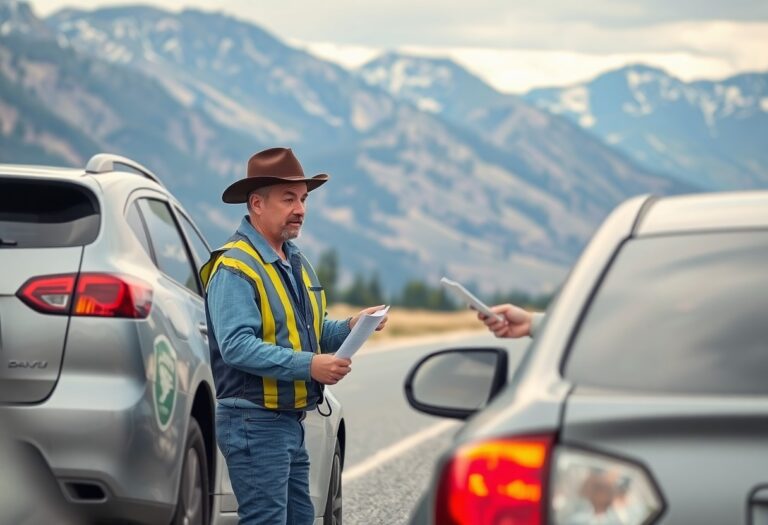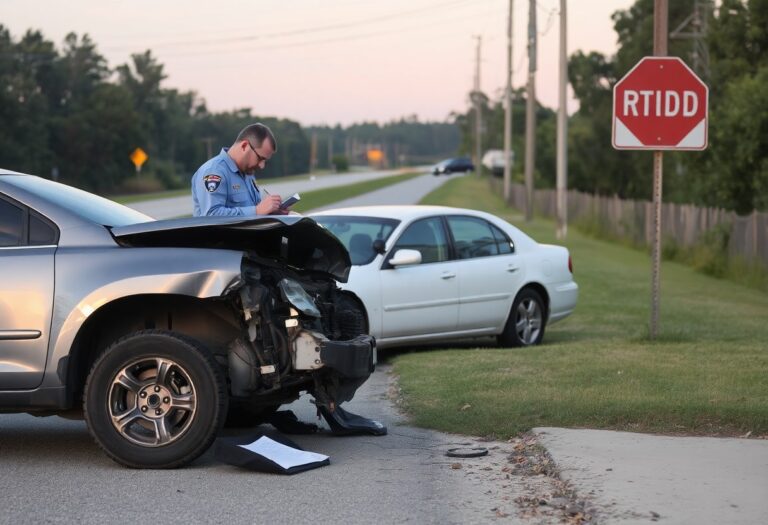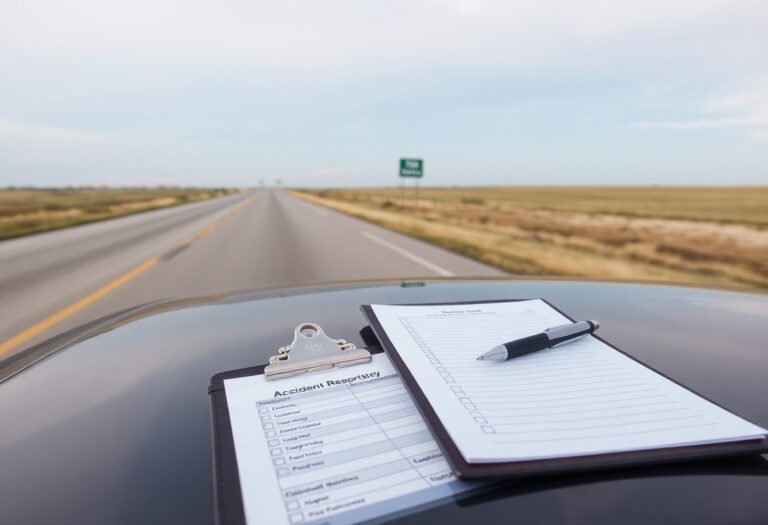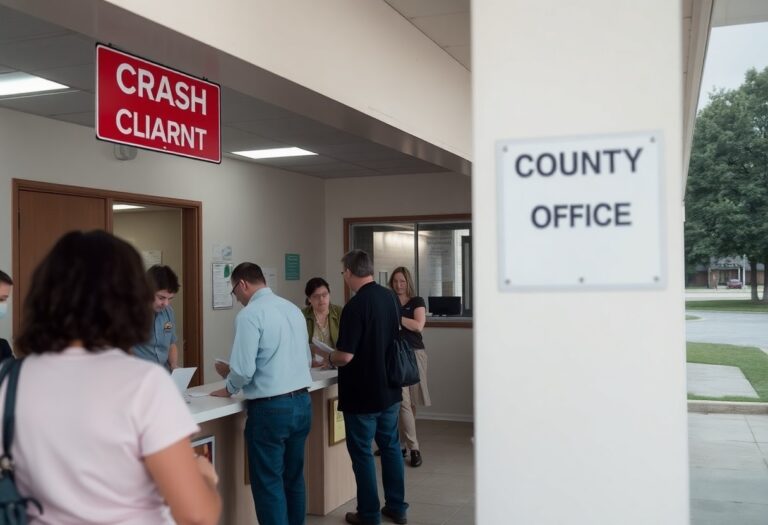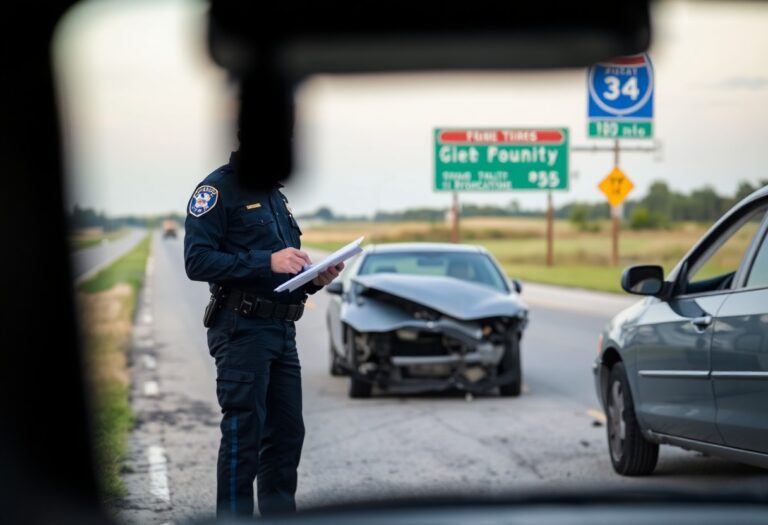This guide is designed to help you easily navigate the process of obtaining an auto accident report in Hartford County, Connecticut. Whether you were involved in a collision or need the report for insurance purposes, understanding the steps and requirements can save you time and hassle. You’ll find information about where to go, what forms to fill out, and any fees associated with acquiring your report. Let’s get started on ensuring you have the necessary documentation at your fingertips.
There’s a simple way for you to obtain your auto accident report in Hartford County, Connecticut. This guide will walk you through the process, ensuring you have all the necessary information to expedite your request. By understanding where to go and what to provide, you can easily access your report for insurance purposes or personal records. Stay informed and make the process as efficient as possible with our helpful tips!
Navigating the Bureaucratic Maze: Where to Request Your Auto Accident Report
Stepping into the maze of paperwork for an auto accident report can be straightforward if you know where to look. Your first step is to identify whether the accident involved local or state law enforcement, as this determines the agency responsible for your report. In Hartford County, police departments and the Connecticut State Police both provide access to reports, and knowing which department to contact can save you time and frustration.
Official Channels: Connecting with Law Enforcement
For most accidents, the initial way to request your report is through the law enforcement agency that responded to the scene. Contact the respective police department directly, either by phone or in-person, and provide details such as the date, location, and parties involved in the incident. Each department has its own procedure for processing requests, so it’s wise to check if they require specific forms or fees.
Online Resources: Digital Access to Reports
Many of Hartford County’s law enforcement agencies have embraced technology to simplify the process of obtaining accident reports. You can access reports online through platforms set up by the police departments or directly on the Connecticut State Police website. This digital approach often allows you to view your report within days, making it a convenient option.
Most agencies provide a dedicated portal showcasing electronic copies of reports. For instance, the Hartford Police Department has an online request system that guides you step-by-step through the process. After submitting the necessary details about your accident, such as the report number or involved parties, you typically receive access to your report shortly after it’s processed, sometimes even within 24 hours. Ensure you have any required identification or case numbers handy to streamline your request further. With these digital solutions at your fingertips, retrieving your accident report can be quicker and more efficient than ever.
Navigating the Aftermath: First Steps Post-Accident
When the dust settles after an auto accident, knowing what to do next can significantly impact your recovery and legal standing. Start by ensuring everyone’s safety—move to a safe location if possible and check for injuries. Contact emergency services for medical assistance and to report the incident. The next step involves gathering crucial information from the scene, which provides context and evidence for potential claims.
Immediate Actions to Take After an Accident
Secure the scene by turning on your hazard lights and placing warning triangles if available. Assess injuries among passengers and drivers, prioritizing their safety by calling for medical help. Exchange contact and insurance details with the other party, while also documenting vehicle damages and sketching the accident scene. Photographs can serve as vital evidence later during insurance claims or legal proceedings.
Importance of Filing a Police Report
Filing a police report can be more than a formality; it acts as an official record of the incident that may be necessary for insurance claims or litigation. Even minor accidents benefit from having a police report to clarify who was at fault, especially when disputes arise. In Connecticut, the police will respond to accidents with injuries, fatalities, or damages exceeding $1,000, providing a detailed report to all involved parties.
The police report holds critical information, including statements from both drivers, witness accounts, and diagrams of the accident. This documentation can strengthen your position when dealing with insurance companies or in court if necessary. In Hartford County, obtaining this report can also streamline the process of acquiring your accident report for your records or any further legal actions you may need to take.
Fees and Timeframes: Understanding Costs and Wait Times
Anticipating the costs and processing times associated with obtaining an auto accident report can help you manage your expectations. Typically, obtaining a report in Hartford County incurs a nominal processing fee, which varies based on the department handling the report. Depending on the circumstances of the incident, the time it takes to receive your report can also differ significantly.
Breakdown of Potential Fees Associated with Reports
In Hartford County, the fee for an auto accident report averages around $20. However, you may encounter additional charges if you request certified copies or if the report requires special handling. Check with the specific department for accurate fee structures, as local agencies may have differing rates for their services.
Expected Timeframe for Report Processing
Processing times for auto accident reports in Hartford County typically range from 5 to 10 business days. Various factors can affect this timeframe, including the complexity of the accident and the volume of requests being processed by the department at the time.
For example, reports from a straightforward collision may be available faster than those involving multiple vehicles or ongoing investigations. If you require your report urgently, inquire about expedited services that some agencies might offer, which could reduce your waiting time significantly. Staying in regular communication with the department can also provide clearer updates on the status of your request.
The Crucial Role of Police Reports in Legal and Insurance Matters
Police reports serve as foundational documents in the aftermath of an auto accident. They provide an official account of the incident, detailing the circumstances, involved parties, and any observed damages or injuries. Your insurance company and legal representatives rely heavily on these reports to determine liability and to process claims efficiently. Accurate and comprehensive reports streamline the resolution of disputes and can significantly influence the outcome of any claims or legal actions that follow. Without them, your ability to substantiate your case diminishes substantially.
How Auto Accident Reports Influence Claims
Auto accident reports directly impact your insurance claims since they contain critical information like witness statements, weather conditions, and road conditions at the time of the incident. Insurers evaluate this data to establish fault, ensuring that claims are processed fairly. If the report attributes fault to another party, you may have a stronger case for receiving compensation for your damages and medical expenses, allowing you to navigate the aftermath of the accident more smoothly.
Legal Implications of Incomplete or Inaccurate Reports
Incomplete or inaccurate police reports pose significant risks for your insurance and legal proceedings, potentially jeopardizing your claims. Any discrepancies can lead to delays or denials of compensation as insurers scrutinize the validity of the report. Furthermore, if the report fails to reflect critical details, you may find it difficult to prove negligence or liability in court, significantly weakening your position in legal disputes.
For example, if the report inaccurately states that you were speeding at the time of the accident when in fact you were obeying traffic laws, this misinformation can lead to complications in your claim and may even impact the court’s perception of your case. Large settlements often hinge on the accuracy of police reports, so any errors can have profound implications, leading to lost benefits or unfavorable judgments. Ensuring that the report is detailed and correct is not simply advisable; it is necessary for your protection as you navigate insurance claims and potential legal actions.
What to Look for in Your Report: Key Components to Examine
Your auto accident report is a vital document that encapsulates all the circumstances surrounding the incident. By examining this report thoroughly, you can gain insights that are crucial for your case or insurance claim. Familiarizing yourself with the key components will help you identify any discrepancies or critical details that may impact your situation significantly.
Essential Information: Names, Dates, and Locations
Start by confirming the names of all individuals involved, as well as their dates and locations. Missing or incorrect information can lead to complications down the line when resolving insurance claims or legal matters. Ensure that your details are accurate, especially regarding your vehicle, the other party, and any witnesses present at the scene.
Analyzing Accident Details: Conditions and Contributing Factors
The section detailing accident conditions and contributing factors is crucial for understanding what led to the incident. Look for information regarding weather conditions, visibility, road hazards, and any mechanical issues. This analysis can provide clarity on whether external factors contributed to the accident or if human error was the primary cause. Understandably, this information can prove critical in settling insurance claims or pursuing legal action.
- Condition descriptions such as wet or icy roads
- Traffic signals and signs in the area
- Descriptions of vehicle damages
- Witness statements and their relevance
Each detail in this section can substantially influence liability assessments. For example, if weather conditions were poor, it may reduce liability on the driver’s part. Look closely at any contributing factors noted by police officers, as they could affect the outcome of your insurance claim or settlement. Recognizing these contributing elements can bolster your case significantly.
- Weather conditions at the time of the accident
- Traffic volume and patterns
- Vehicle speed at the time of impact
- Driver behavior leading up to the incident
By scrutinizing these details, you can pinpoint areas that may support your narrative of the accident. For instance, if a vehicle was speeding or running a stop sign, this evidence can heavily influence how the accident is perceived. Recognizing these factors might make the difference in your negotiations with insurers or in court proceedings.
Accessing Your Accident Report: A Step-by-Step Guide
Obtaining your auto accident report is a straightforward process when you know where to go and what to do. Follow these steps to streamline your request:
| Step 1 | Identify the police department handling the report. |
| Step 2 | Gather necessary documents and information. |
| Step 3 | Submit your request through the appropriate channels. |
| Step 4 | Pay any required fees and await processing. |
Locating the Right Department for Your Request
Start by determining which police department was involved in your accident. Typically, this is the local agency that responded to the scene. If you’re unsure, you can check the accident location to find out whether it falls under state police jurisdiction or local law enforcement. Each agency has their own procedures for obtaining reports, so pinpointing the correct office is beneficial.
Documentation Required for Access
A few documents are needed to request your auto accident report. You’ll typically need to provide your driver’s license number, the report number (if available), and the date and location of the accident. If you’re requesting the report on behalf of someone else, a signed release form may be necessary.
Specific documents enhance your likelihood of a successful request, including the date, time, and location of the accident along with your contact information. If the report involves injuries or property damage, having accident-related documentation can help verify your identity. If you’re unable to find the report number, having these details on hand can expedite the retrieval process.
Understanding Fees and Processing Times
Obtaining your accident report may involve a small fee that varies by department. Processing times can also differ, often ranging from a few days to several weeks, depending on the volume of requests and the specific office’s operations.
Fees for accessing the report may be nominal, occasionally ranging from $5 to $20. It’s wise to check the specific department’s website or call ahead for exact amounts and acceptable payment methods. Platform processing times typically fluctuate, with some departments providing same-day service, while others might take a couple of weeks, especially if the accident report is subject to further review.
Troubleshooting Common Issues: What to Do If Your Report Is Incomplete or Incorrect
If you find discrepancies in your auto accident report, addressing them promptly can prevent complications later on. First, verify the accuracy of your details, such as your name, vehicle information, and the accident timeline. Contact the appropriate law enforcement agency to discuss any inaccuracies. They may require you to submit a formal request or complete a specific form for corrections. Keep a record of your communications, as this is crucial for resolving disputes that may arise.
Steps to Correct Errors: Addressing Mistakes in Documentation
To correct errors in your auto accident report, initiate the process by contacting the law enforcement authority that issued the report. Be ready to provide your report number and specific details about the inaccuracies you’ve identified. Completing a complaint form detailing the requested corrections may be necessary. Once submitted, follow up regularly to ensure your corrections are processed.
How to Appeal Denials: Navigating the Challenge Process
If your request for changes to the accident report is denied, you can initiate an appeal. Start by reviewing the denial notice thoroughly to understand the rationale behind the decision. Once you have clarity, gather supporting evidence, such as witness statements or photographs, to strengthen your case. Submit an appeal letter detailing your argument and include all gathered documentation to the relevant authorities. Regular follow-ups can also improve the chances of your appeal being reconsidered.
Appealing a denial involves more than just resubmitting your request. You’ll likely need to articulate why the initial assessment was incorrect by presenting new evidence or clarifying misunderstandings. If the police department stands firm on their decision, escalating the issue to a higher authority, such as a separate oversight board or hiring an attorney experienced in this area, may be beneficial. Remaining persistent and organized during the process can significantly increase your chances of a successful appeal.
Digital vs. Physical Copies: Choosing What’s Best for You
Deciding between a digital or physical copy of your auto accident report often depends on your personal preferences and specific needs. Digital copies offer immediate access and ease of storage, while physical copies can serve as a more tangible document for official purposes. Consider how and where you’ll need to use the report, as well as the resources you have available for storage and accessibility.
Benefits of Digital Access to Accident Reports
Accessing accident reports digitally allows you to retrieve your documents instantly, eliminating the need to visit a physical location. You can save the report on your computer or mobile device for quick reference. Additionally, digital records are easily shareable, making it simple to forward important information to your insurance company or legal team when needed.
Situations Where a Physical Copy is Advantageous
A physical copy of your accident report is beneficial in several scenarios. For instance, if you are filing an insurance claim or presenting evidence in court, having a printed version can lend credibility to your documentation. Additionally, some organizations may require paper copies for their records, and having a physical document ensures you comply with their protocols.
In situations involving legal disputes or negotiations, a physical copy may be important. Courts often require hard copies for submissions to ensure authenticity. Furthermore, having a printed version can help you keep a clear and organized record for personal use, facilitating discussions with attorneys or insurers. If you’re dealing with technical issues or incompatible formats with digital versions, a physical copy eliminates the risks of formatting errors and ensures all details are clearly presented.
Insurance Implications: How Your Accident Report Affects Claims
Your accident report can significantly influence your insurance claims process. Insurers rely on these reports to determine fault, assess damages, and calculate settlements. A detailed, objective report often strengthens your case, increasing the likelihood of a favorable outcome. Conversely, inaccuracies or a lack of detail may lead to delays or decreased compensation from your insurance provider.
Understanding the Role of the Report in Insurance Processes
The accident report serves as an official documentation that outlines the particulars of the incident, including parties involved, witness statements, and police observations. This information plays a vital role in how insurers assess liability and damages. A clear, comprehensive report can expedite your claim, as it provides necessary context and substantiates your narrative, ensuring that your side of the story is documented.
Strategies to Strengthen Your Claim with Report Evidence
To enhance your claim, focus on collecting and presenting all relevant evidence alongside your accident report. Supplement the report with photographs of the scene, witness statements, and any medical documentation related to your injuries. Consistency between the report and your additional evidence can fortify your position, demonstrating the validity of your claim.
Utilizing photographs to show the accident scene can further illustrate the conditions that led to the incident. For instance, if weather played a role, capturing images of road conditions can support your case. Maintain communication with your insurance adjuster to provide any new information related to your injuries or ongoing medical treatment, ensuring that they have a complete picture to assess your claim accurately. Finally, seeking legal advice might provide clarity in complex situations, helping you convey the strongest possible narrative to your insurer.
What to Do If Your Report Contains Errors
Errors in your accident report can lead to complications in insurance claims and legal proceedings. Addressing these inaccuracies promptly is necessary to avoid any negative impact on your case. Once you’ve identified discrepancies, you’ll need to follow a set process to ensure your report is corrected accurately.
Identifying Discrepancies in Your Report
Start by carefully reviewing your accident report for any mistakes, such as incorrect dates, wrong vehicle descriptions, or inaccurate witness information. Look for inconsistencies between the report and your recollection of events or corroborating statements from witnesses. Even small details matter, as they can influence how your situation is understood.
The Process for Requesting Corrections
To request corrections, contact the law enforcement agency that issued the report. Typically, you must provide details about the specific errors and, if possible, documentation to support your claims. Many agencies have a formal request form to streamline the process. Be prepared for potential follow-ups to ensure timely processing.
Receiving a corrected report is often a straightforward process, but it may require patience. After submitting your request, it may take several days to weeks for the agency to review your information. Follow up periodically to check on the status of your request and be sure to keep records of all communications. In some instances, it might also be beneficial to consult with an attorney if the errors significantly impact your case.
To wrap up
Hence, accessing an auto accident report in Hartford County, Connecticut, is a straightforward process if you follow the right steps. Start by contacting the appropriate police department or check online for digital access options. Ensure you have relevant details, such as the date, location of the accident, and involved parties’ information. By keeping organized and knowing where to look, you can efficiently obtain the report you need for insurance claims or legal purposes.
Final Thoughts: Empowering Yourself Through Knowledge
Understanding how to navigate the process of obtaining your auto accident report equips you with critical information that can shape your next steps. Knowledge of your rights and the procedures involved can help you tackle insurance claims more effectively and resolve any disputes that may arise. For example, knowing how long you have to request a report or what details to double-check can prevent unnecessary delays. By arming yourself with this information, you’re not only simplifying your experience but also ensuring that you are prepared to make informed decisions that can significantly impact your recovery journey.







